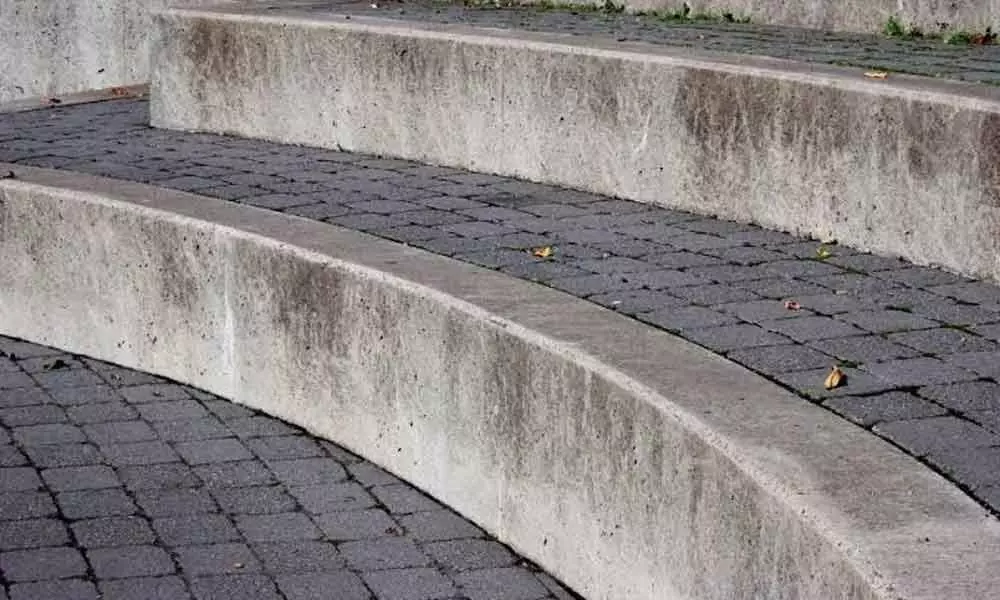Live
- Govt open to discuss all issues, says Kiren Rijiju on eve of Winter Session of Parliament
- Pakistan reports three new polio cases, 2024 tally reaches 55
- Multifold Increase in migratory bird population at TN bird sanctuary
- Archaka Maha Sabha in Jogulamba Gadwal District Highlights Key Demands for Priests' Welfare
- IPL 2025 Auction: Both Rahul and Starc are world-class players, says Delhi Capitals head coach Badani
- Committed to the Welfare of Brahmins - MLA Kuchukulla Rajesh Reddy
- MLA Shri Ganesh Participates in Maha Sudarshana Homam and Srinivasa Kalyanam in Secunderabad
- Terror hideout busted in J&K's Kupwara district
- PM Modi to throw open global cooperative conference on Monday
- Toyota Kirloskar Motor Celebrates “Namma Kannada Habba 2024” Japanese CEO Wins Hearts with Fluent Kannada
Just In
To Create Concrete that is Alive and Can Reproduce, Scientists Uses Bacteria


Cyanobacteria, a common class of microbes that capture energy from sunlight through photosynthesis, now they can also deposit a new material named “Minerals”.
Cyanobacteria, a common class of microbes that capture energy from sunlight through photosynthesis, now they can also deposit a new material named "Minerals".
Scientists have used bacteria to create a sustainable concrete that is alive, and can even reproduce, in advance it will also help in reducing the environmental impact of the construction industry.
Cyanobacteria, a common class of microbes that capture energy from sunlight through photosynthesis, now they can also deposit a new material named "Minerals" according to the study published in the journal Matter.
Wil Srubar, who's an assistant professor at the University of Colorado Boulder in the US, said:
"We already use biological materials in our buildings, like wood, but those materials are no longer alive". "We''re asking: Why can''t we keep them alive and have that biology do something beneficial, too?"
Some researchers said that their ability to keep the bacteria alive with a high success rate shows that living buildings might not be too far off in the future.
They said: Such structures could, one day, heal their own cracks, suck up dangerous toxins from the air or even glow on command.
Srubar said: "The sky''s the limit for our creativity,"
This might not be true for today's more "corpse-like" building materials, he said can be costly and polluting to manufacture.
According to the researchers; making the cement and concrete alone needed for roads, bridges, skyscrapers and other structures generates nearly 6 per cent of the world's annual emissions of greenhouse gas carbon dioxide.
The team has experimented with cyanobacteria which belongs to the genus Synechococcus.
If one provided the right conditions, these green microbes absorb carbon dioxide gas to help them grow and make calcium carbonate (the main ingredient in limestone and cement).
The researchers inoculate colonies of cyanobacteria into a solution of sand and gelatin to begin the manufacturing process.
They said; With the right tweaks, the calcium carbonate churned out by the microbes mineralise the gelatin which binds together the sand, and the brick.
Srubar said; "It''s a lot like making rice crispy treats where you toughen the marshmallow by adding little bits of hard particles."
The researchers said Additionally, such bricks would remove carbon dioxide from the air, not pump it back out.
The research team has discovered that under a range of humidity conditions, the bricks have about the same strength as the mortar used by contractors today.
They had also discovered that they could make their material reproduce.
They said; "Chop one of these bricks in half, and each of half is capable of growing into a new brick."
Roughly 9-14 per cent of the bacterial colonies in their materials were still alive after 30 days, and three different generations in brick form, according to the group's calculations.
To develop self-healing materials, bacteria added to concrete, in contrast, tend to have survival rates of less than 1 per cent.
Srubar said:
"We know that bacteria grow at an exponential rate,"
"That's different than how we, say, 3D-print a block or cast a brick. If we can grow our materials biologically, then we can manufacture at an exponential scale."
The researchers said cyanobacteria will need humid conditions to survive, however that's not possible in more arid regions of the world.
To make them remain alive and functional, the researchers are working to engineer microbes that are more resistant to drying out.

© 2024 Hyderabad Media House Limited/The Hans India. All rights reserved. Powered by hocalwire.com






